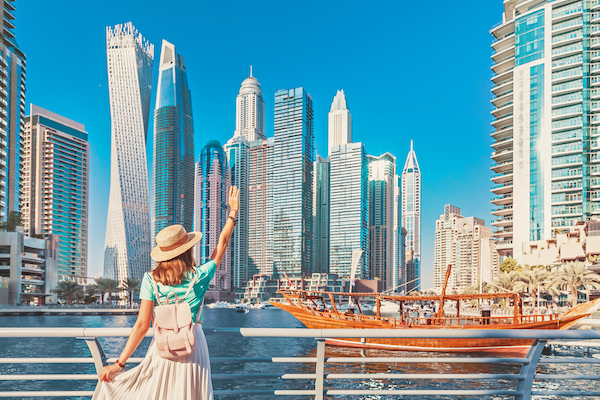Dubai, the glittering jewel of the UAE, beckons travelers with its blend of futuristic marvels, rich cultural heritage, and sun-drenched landscapes. As you plan your exhilarating dubai tours, one of the most common questions that arises is: “What exactly should I pack to wear in Dubai?” Navigating the city’s unique balance of modern luxury and deep-rooted traditions requires a thoughtful approach to your wardrobe. This Practical guide aims to offer clarity, ensuring you remain comfortable, respectful, and stylish throughout your unforgettable visit.
Understanding Dubai’s climate and cultural norms is paramount to packing wisely. The city experiences scorching summers and pleasant, warm winters. Beyond the weather, as a predominantly Muslim country, modesty is valued, particularly in public spaces and religious sites. Striking a balance between cultural sensitivity and personal comfort is the key to enjoying all that Dubai has to offer.
Understanding Dubai’s Climate: Hot and Sunny
Dubai’s climate is characterized by long, hot summers (May to September) with temperatures often exceeding 40°C (104°F), and mild, pleasant winters (October to April) ranging from 18°C to 30°C (64°F to 86°F). This dictates your fabric choices more than anything.
- Summer Essentials: Opt for lightweight, breathable fabrics like cotton, linen, and rayon. These materials allow for air circulation, helping to keep you cool. Loose-fitting clothing is also highly recommended over tight garments, as it promotes ventilation. Light colors reflect sunlight, further aiding in comfort.
- Winter Considerations: While winters are milder, the sun is still strong. You’ll still want light fabrics during the day, but consider packing a light jacket, cardigan, or shawl for cooler evenings, especially when dining outdoors or on a desert safari. Air-conditioned indoor spaces can also be quite chilly, so layers are always a good idea.
Cultural Sensitivity: Respectful Dressing
Dubai is a cosmopolitan city, welcoming people from all over the world, but it is deeply rooted in Islamic traditions. Dressing respectfully is not just about adhering to rules, but about showing appreciation for the local culture.
- General Public Spaces (Malls, Restaurants, Streets): For both men and women, it’s advisable to cover shoulders and knees. While you will see tourists in shorter attire, opting for knee-length skirts, dresses, or shorts, and tops with sleeves, ensures you won’t feel out of place and demonstrates respect. Avoid overly revealing clothing, sheer fabrics, or aggressive slogans.
- Religious Sites (Mosques, especially Sheikh Zayed Grand Mosque): Strict dress codes apply here.
- Women: Must cover their heads (a scarf is essential), arms to the wrists, and legs to the ankles. Loose-fitting clothing is mandatory. Abayas are often provided for loan at the Grand Mosque if your attire isn’t sufficient.
- Men: Should wear long trousers and shirts (no shorts or sleeveless tops).
- Hotels & Resorts: Within your hotel or resort, especially by the pool or private beach, dress codes are generally more relaxed, allowing for swimwear. However, it’s customary to cover up when moving through common areas like lobbies or restaurants.
- Fine Dining: Many high-end restaurants and bars in Dubai have their own dress codes, often leaning towards smart casual or elegant attire. It’s always a good idea to check in advance.
What to Pack for Her
- Tops: T-shirts, blouses, and tunics with sleeves (short or long, depending on comfort). Avoid spaghetti straps or very low-cut necklines for public areas.
- Bottoms: Maxi skirts, palazzo pants, linen trousers, capri pants, knee-length or midi dresses/skirts. Jeans are fine.
- Outerwear: A light cardigan, shawl, or thin jacket for air-conditioned indoors or cooler evenings. A lightweight scarf is essential for mosque visits and can double as a stylish accessory.
- Swimwear: For hotel pools and beaches.
- Footwear: Comfortable sandals, flats, or sneakers for daily sightseeing. Heels for evening dining.
What to Pack for Him
- Tops: T-shirts, polo shirts, short-sleeved shirts, or light long-sleeved shirts. Tank tops are generally not recommended for public areas.
- Bottoms: Trousers, chinos, or smart shorts (knee-length). Jeans are acceptable.
- Outerwear: A light jacket or sweater for cooler evenings or air-conditioned spaces.
- Footwear: Comfortable shoes for walking, and dress shoes for fine dining.

Special Activities: Dressing the Part
Certain dubai tours and activities might have specific dressing considerations:
- Desert Safari: For a desert safari, comfortable, loose clothing is best. Long pants and a t-shirt are ideal to protect from the sun and sand. Layers are good for evenings as the desert can get surprisingly cool. Closed-toe shoes are recommended to keep sand out. Tour operators like 3 Brothers Tourism often provide specific advice for their excursions.
- Water Parks (e.g., Aquaventure, Wild Wadi): Standard swimwear is perfectly acceptable. However, avoid extremely revealing swimsuits. Rash guards can provide extra sun protection.
- Adventure Activities (e.g., Ziplining, Indoor Skydiving): Wear comfortable, athletic clothing. Closed-toe shoes are almost always required.
- Beach Clubs: Dress codes at private beach clubs can be more relaxed than public areas, often allowing stylish swimwear.
Practical Guide for Your Dubai Wardrobe
- Layers are Your Friend: The contrast between outdoor heat and aggressively air-conditioned indoor spaces can be stark. Layers allow you to adapt quickly.
- Sun Protection: Regardless of your clothing, always use high-SPF sunscreen, wear sunglasses, and consider a wide-brimmed hat.
- Accessorize Smartly: A stylish scarf can instantly transform an outfit from casual to culturally appropriate for a quick mosque visit.
- Pack Light, Buy Local: If you find you’re missing something, Dubai’s malls offer an endless array of shopping options. You can easily pick up modest clothing or a traditional abaya/kandura if you wish.
- Comfort Over Fashion (Sometimes): While Dubai is glamorous, prioritize comfort for sightseeing, especially in the heat.
In conclusion, dressing for Dubai is less about rigid rules and more about mindful consideration of its cultural fabric and climate. By choosing breathable fabrics, opting for modest cuts in public, and layering smartly, you can ensure a comfortable, respectful, and truly enjoyable trip. Whether you’re exploring ancient souks, enjoying a thrilling desert safari, or indulging in the city’s modern marvels, this Practical guide ensures you’re perfectly attired for every magnificent moment of your Dubai adventure.

